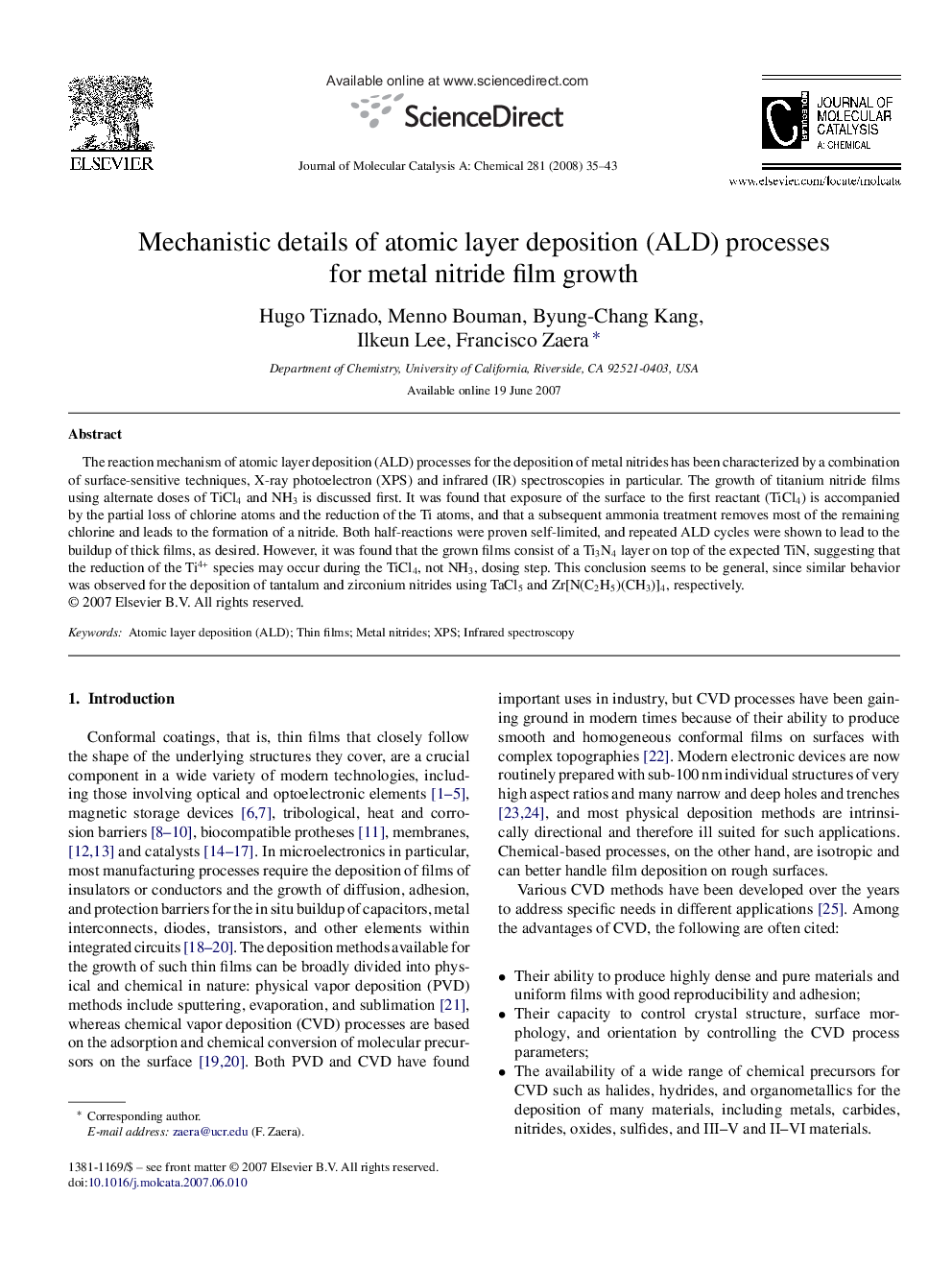| Article ID | Journal | Published Year | Pages | File Type |
|---|---|---|---|---|
| 68178 | Journal of Molecular Catalysis A: Chemical | 2008 | 9 Pages |
The reaction mechanism of atomic layer deposition (ALD) processes for the deposition of metal nitrides has been characterized by a combination of surface-sensitive techniques, X-ray photoelectron (XPS) and infrared (IR) spectroscopies in particular. The growth of titanium nitride films using alternate doses of TiCl4 and NH3 is discussed first. It was found that exposure of the surface to the first reactant (TiCl4) is accompanied by the partial loss of chlorine atoms and the reduction of the Ti atoms, and that a subsequent ammonia treatment removes most of the remaining chlorine and leads to the formation of a nitride. Both half-reactions were proven self-limited, and repeated ALD cycles were shown to lead to the buildup of thick films, as desired. However, it was found that the grown films consist of a Ti3N4 layer on top of the expected TiN, suggesting that the reduction of the Ti4+ species may occur during the TiCl4, not NH3, dosing step. This conclusion seems to be general, since similar behavior was observed for the deposition of tantalum and zirconium nitrides using TaCl5 and Zr[N(C2H5)(CH3)]4, respectively.
Graphical abstractThe mechanism of the surface reactions involved in the atomic layer deposition (ALD) of metal nitride films has been characterized with the aid of X-ray photoelectron and infrared spectroscopies. Metal reduction appears to occur at least in part via disproportionation of the metal precursor. That leads to the growth of non-stoichiometric films. Figure optionsDownload full-size imageDownload as PowerPoint slide
